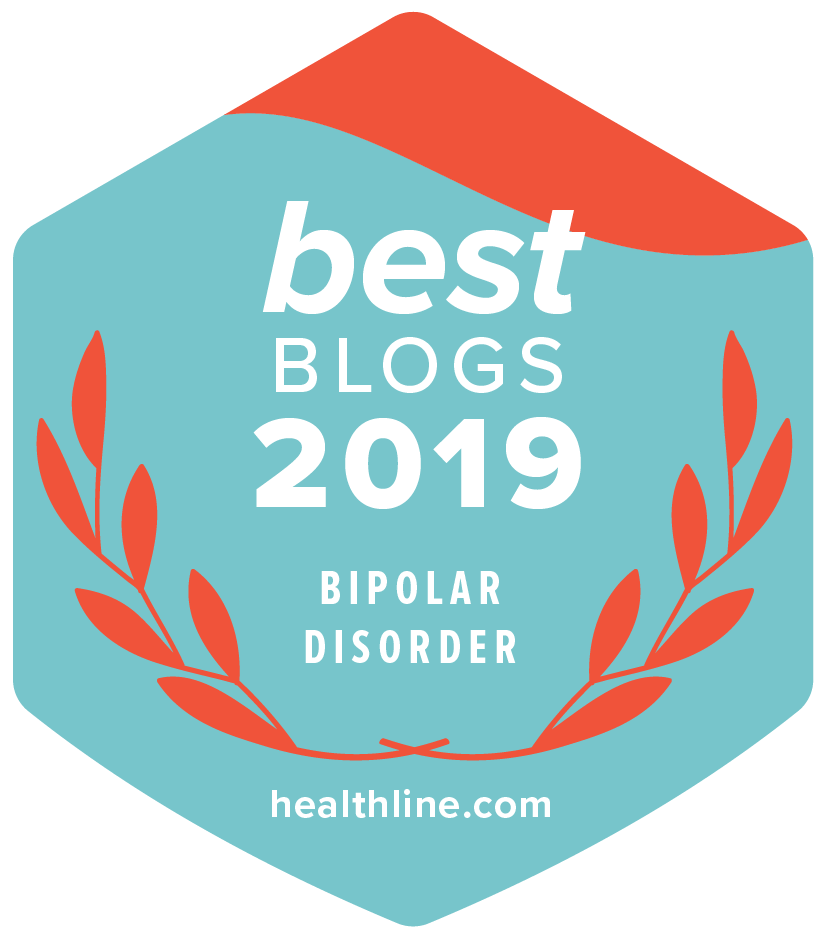It’s pretty easy to tell the difference between bipolar disorder and schizo affective disorder once you know what to look for.
Bipolar disorder is an episodic disorder that has two main mood swings: MANIA and DEPRESSION. A person with bipolar disorder can also have psychosis. Statistically, 70% of people with bipolar disorder one will have psychosis when they are in a full blown manic episode. This means that most people with bipolar disorder one have psychosis. People with bipolar disorder two can also have psychosis- I do- but it rarely comes with hypomania which is the type of mania you see in bipolar disorder two. This means that SOME people with bipolar disorder two will have psychosis, but it will almost always be associated with depression.
Here is the important point to remember:
Bipolar disorder psychosis is ALWAYS attached to either a manic or depressive mood swing. It doesn’t exist on its own.
If a person has bipolar disorder and experiences psychosis when they are NOT manic or depressed, this is considered schizo-affective disorder. The word schizo is used to describe the psychosis and affective simply means mood. So we could translate this as Psychotic-Mood disorder.
Please note that schizo affective disorder DOES NOT mean that a person has bipolar disorder and schizophrenia. Here is the definition of schizoaffective disorder:
When a person who has bipolar disorder has psychosis that is separate from either a manic or depressive mood swing, they receive the schizoaffective disorder diagnosis. Schizophrenia comes with many, many more symptoms than psychosis that a person with schizoaffective disorder may or may not have. It is possible to have a type of schizophrenia such as paranoid schizophrenia and bipolar disorder and still get the schizoaffective disorder diagnosis, but in general, the schizoaffective diagnosis simply means psychosis outside of mania and depression.
Sherry Joiner, the author of Sherry Goes Sane: Living a Life with Schizoaffective Disorder notes: It’s possible for a person with the kind of schizoaffective disorder that I have to switch back and forth between an actual schizophrenia episode and then a bipolar disorder episode. They can be separate. During schizo-affective disorder you have mania and depression with psychosis going on all of the time. I manage mine with medications, seeing my health care team, painting, working with people in the psych ward, giving speeches for NAMI’s In Our Own Voice, maintaining my relationships, writing on my blog and using what I call Sherry’s Master Plan to manage the illness daily. It’s all in my book! With my schizo affective disorder, I have episodes of depression and mania, but my psychosis is continual. That is the difference!
I love learning about all types of mental health disorders. It helps with my coaching and it definitely makes me a better writer!
Julie
PS: Click here to read more about Sherry’s latest book contest where you can win one of her original paintings! If you have any questions for Sherry about schizoaffective disorder, please leave them in the comments section and I will pass them on to her!








My therapist told me that I am Schizo-affective; Bi-Polar type. Is this the same as Bi-polar 2? Or does this just mean that I am bi-polar AND schizo-affective?
anyway, thanks for existing and sharing good info!
eric D